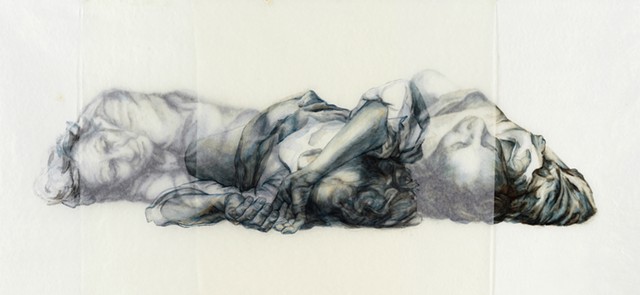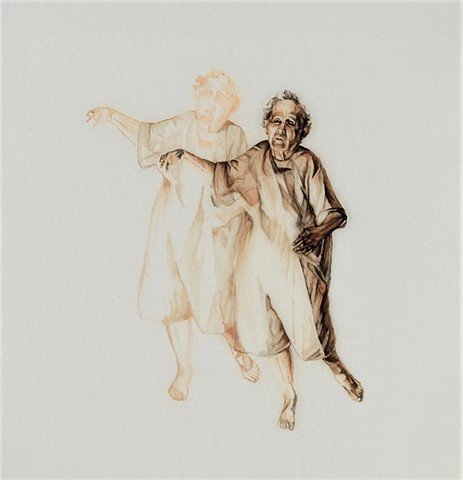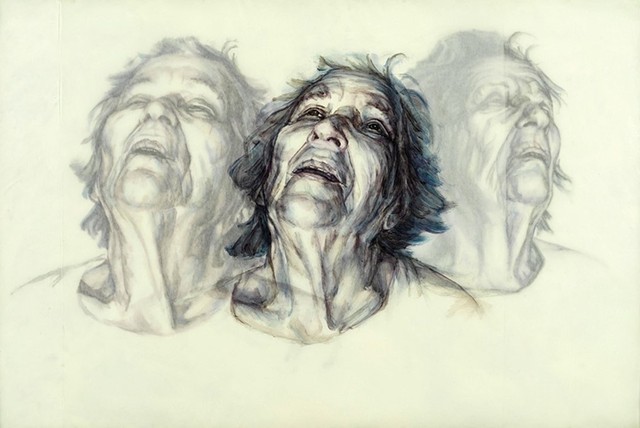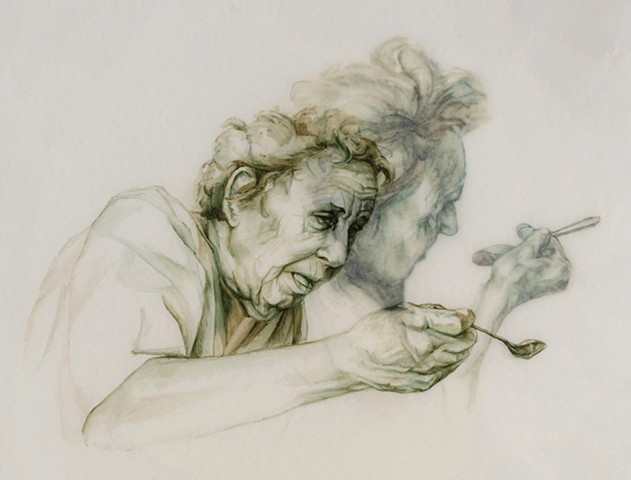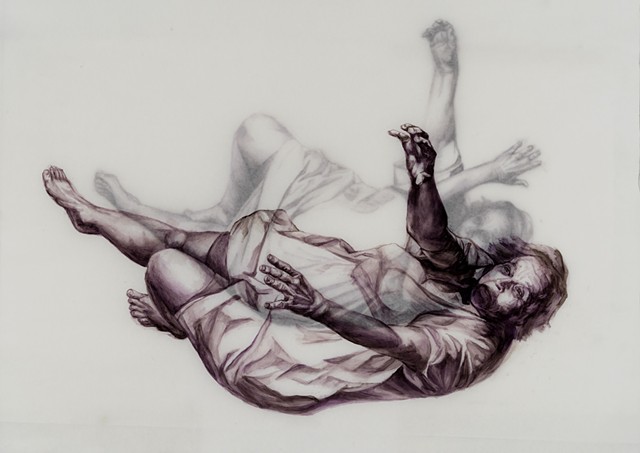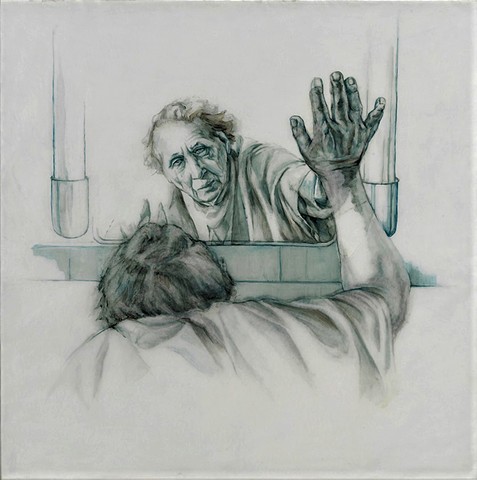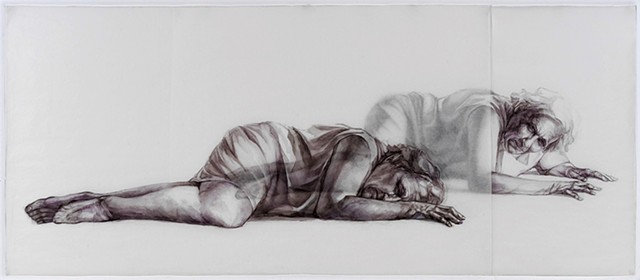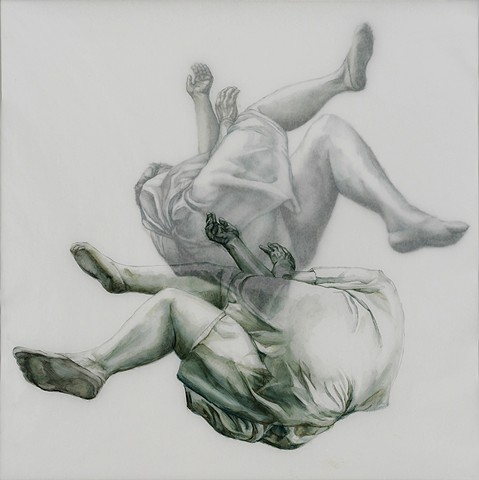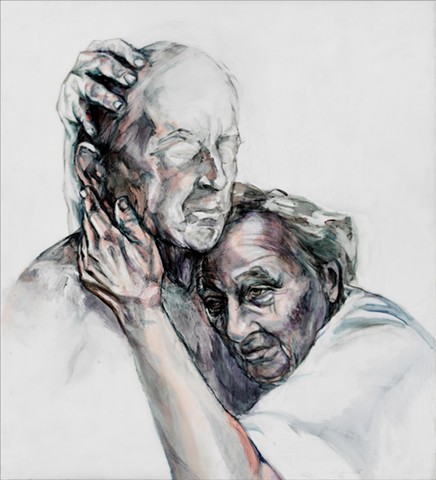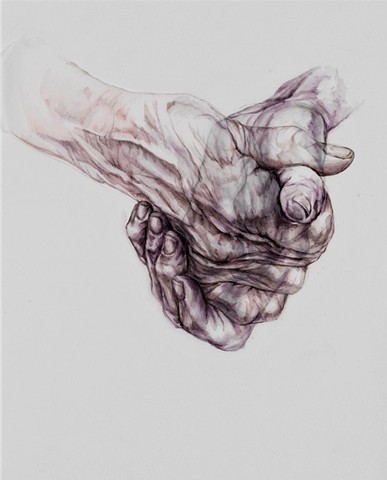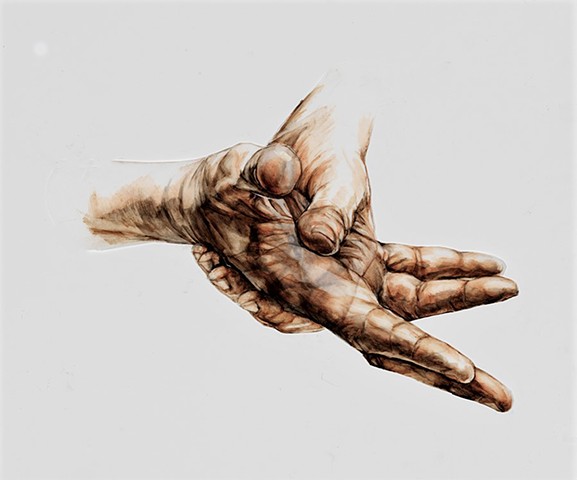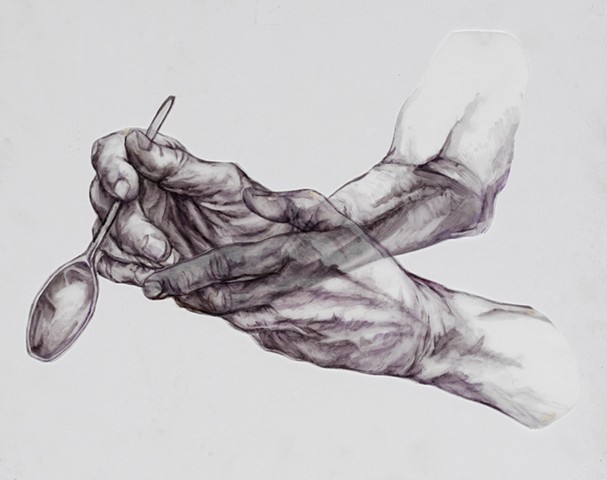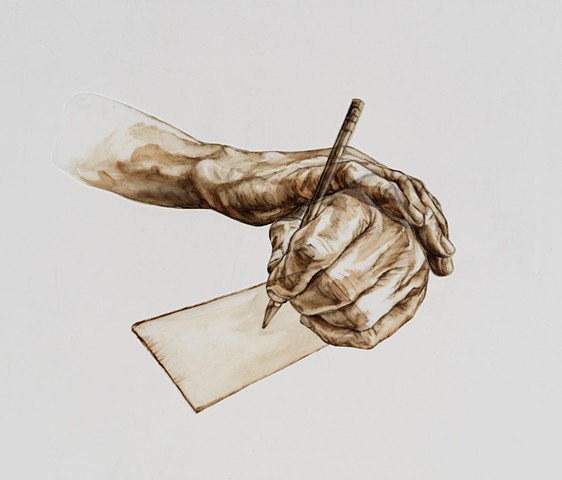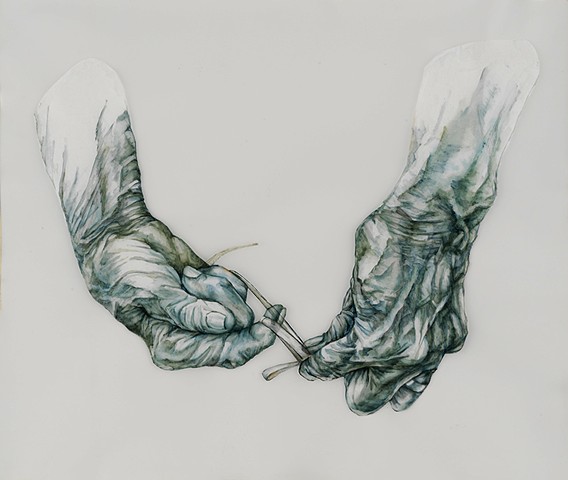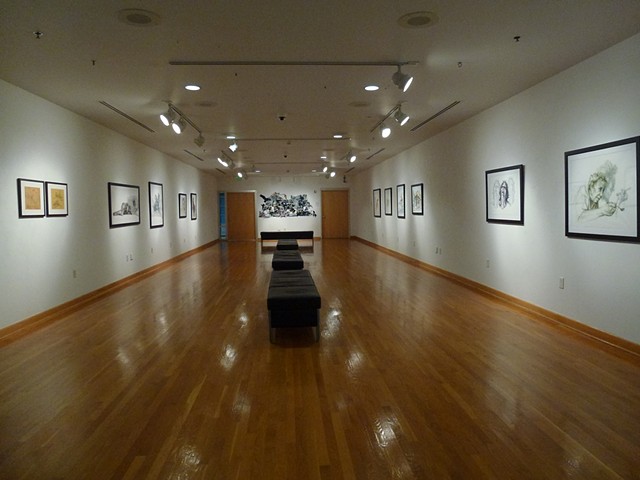Drawings on Glassine, 2017-2019
Through Glassine Darkly: Mary Porterfield’s In:Dependence
Essay by Lauren Ashley DeLand
Art Writer, Art in America
Aging wreaks paradoxical effects on the human form. As the body stoops and shrinks, the flesh simultaneously becomes more insistent: sagging, wrinkling, puckering, bulging out or hanging slack. The host of health problems that typically attend the aging process likewise signal the body’s demands more loudly than before. Given the urgency with which the aged body presents itself, it is all the more remarkable that Americans have trained such a willful blindness to banish the specter of aging from our collective sight. Aged subjects are virtually absent from popular media, and literally partitioned from the rest of society in retirement communities. The veneration of age performed in the Roman portrait tradition of verism (and practiced more broadly and contemporaneously in many Asian as well as Native American societies) has no equivalent in dominant American culture, which fairly revolves around preserving the appearance of youth at all costs.
With the works comprising her series In:Dependence, Mary Porterfield removes these cultural blinkers, fixing our gaze upon the subjects it often seems we least wish to see. Her materials lend an element of verisimilitude to her compelling renderings of elderly women: sheets of translucent glassine buckle slightly under thin layers of oils in sepia and greenish-grey, wrinkling like papery skins. The topmost layer of Seen and Unseen (2018) acts as a kind of cataract over the underlying image of a pensive elder, casting a film over all but, ironically, her eyes, which peer solemnly through star-like rends in the surface. In certain of the compositions, gestures enacted by figures painted upon the uppermost layers appear again as ghostly echoes on the layers beneath, performing the repetition that characterizes the lives of both sufferers of dementia, and the caregivers who labor to keep them alive. As the body’s ability to partake in activities beyond the mundane necessities of keeping itself clean, fed, and rested dwindles, the tediousness of meeting these needs intensifies. Yet perhaps so do the pleasures of satisfying these needs: consider Porterfield’s image of a woman, her face a network of tributaries in blue-green and silt-brown, who raises a spoon to her lips with apparently not a little effort. What may appear to our eyes as unappetizing mush is to her something much more, as the title, Cherish (2018), implies.
With In:Dependence, Porterfield joins the exclusive company of the very few American artists who have depicted aging subjects in a way that neither condescends to them nor sentimentalizes their struggles. Alice Neel became one such artist in executing her Self Portrait (1980) at age eighty; Elizabeth Layton focused on elderly subjects almost exclusively after embarking on her art career when she was in her sixties. Porterfield similarly presents her mature subjects without glossing over the debilitating effects of aging on their bodies, or demeaning them with pity. The solitary waltz in which the figure seems to lead herself in Last Dance (2017) as well as in Passages (2018), guided as if by the light of an invisible lantern, is in Porterfield’s paintings affirming, not pathetic; for what characterizes a life if not the will to do something in excess of bare survival (and isn’t the expression of this excess truly all art ever is)? One can detect in the artist’s unflinching naturalism echoes of Théodore Géricault’s renderings of bodies dead and alive, in his studies of severed limbs in preparation for work on The Raft of the Medusa (1818-19), and in the at once pathologizing and wrenching portraits of insane “types” of 1822. Yet despite her training in biology, Porterfield’s treatment of her subjects is never merely forensic, but rather reflective of her intimate knowledge of the ordinary, yet imposing challenges of operating within an aging body, informed by her work as an occupational therapist. (The branch-brandishing knights of The Protectors (2017) might be clad in the scrubs that are the costume of her profession—or, as their bare feet imply, do they wear pajamas, as if rising in the night to check on the elder who sits, enhaloed and enthroned in her wheelchair beneath the pyramid formed by their wands?)
Porterfield endows the subject of Mirrored Reflections (2018) with a dignity that endures even given the open question of whether this woman is able to recognize the face before her. Her gaze is unfocused, and her frailty signaled in her hunched posture and the flyaway cobwebs of her hair. Yet the hand and forearm she rests on the silver surface is solid, even muscular; perhaps what we see is closer to the verist tradition of submitting the aged body as evidence of a venerable life of hard work. In a series through which Porterfield’s figures float free of any relationship to a ground, ghostly against the waxy haze of the glassine leaf, this woman alone appears even somewhat anchored to a surface. The subject of Alice Begins (2018), who appears on different layered planes of the image in markedly different emotional states, likewise conjures associations with mirrors, and not just in the redoubling of her form. There is of course the name she shares with Lewis Carroll’s Alice, who is forever transformed following her passage through a looking glass; there is also the Biblical admonishment of 1 Corinthians 13:12 that while we look through mortal eyes we see only “through a glass, darkly”; that we cannot while we live perceive things as they truly are. Perhaps this promised beginning of a new order of seeing and understanding fortifies Porterfield’s Alice as she approaches a beginning that comes at an end.
--Dr. Lauren DeLand, 2018
